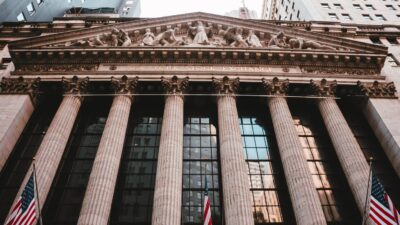Are Cyclical ETFs Worth the Boom and Bust?
Cyclical industries can provide some regularity for ETF investors, but not without downsides.

Sign up for exclusive news and analysis of the rapidly evolving ETF landscape.
Just like the weather, the markets change, and just like meteorologists, investors try to predict those changes.
Some industries, however, go through regular boom-and-bust cycles. Cyclical industries, encapsulating everything from airlines to raw materials, tend to track the wider economy, with expansions and contractions happening at regular intervals based on the broader market. ETFs tracking cyclicals can offer bullish investors high returns in times of prosperity, but experts said even periodic sectors can be unpredictable. “At a certain point, you’re really making bets on a single stock, or a few stocks, that are really going to be the driver of the returns,” said Dan Sotiroff, research analyst at Morningstar. “That’s what I think a lot of people miss with this stuff.”
What Goes Up…
Cyclical industries like manufacturing, consumer discretionary products, and construction typically thrive in economic expansions but suffer during slowdowns. (Americans tend to cut back on travel and discretionary spending in times of hardship.) Issuers have tried to capitalize on these patterns, carving out niche funds that promise high returns in bull markets.
Take the AdvisorShares HVAC and Industrials ETF launched earlier this year, which bundles companies that manufacture heating and cooling systems, or the Materials Select Sector SPDR Fund (XLB), which follows the materials sector of the S&P 500. (It holds just 29 stocks, with the top 10 making up over 60% of its assets.) Although short-term outlooks can look rosy, investors need to be aware of the long-term risks, Sotiroff said, particularly since cyclical and sector ETFs — unlike thematic ETFs like artificial intelligence or robotics — don’t usually span multiple industries. “[Cyclical ETFs] go through these waves where the biggest companies, the ones driving the return of the ETF, are hitting home runs, and they look great,” he said. “Then six months or a year out, they look terrible.”
Other cyclical industry ETFs include:
- The U.S. Global Jets ETF (JETS), which tracks American and international airlines, plane manufacturers, airports and airline-related communications companies.
- The Consumer Discretionary Select Sector SPDR Fund (XLY), which tracks the consumer discretionary sector of the S&P 500, including categories like entertainment, cars and retail.
- The iShares U.S. Real Estate ETF (IYR), which tracks US real estate companies and real estate investment trusts.
Fee-ble Returns. The other reason investors should be wary of these funds is that a lot of them charge “obnoxiously high” fees, Sotiroff said. (JETS has an expense ratio of 0.60% and HVAC’s is 0.89%.) “Fees dictate performance. They’re charging higher fees because they can, because they’re giving you specialized access to some niche segment of the economy,” he said. “But that tends not to work out very well.”










